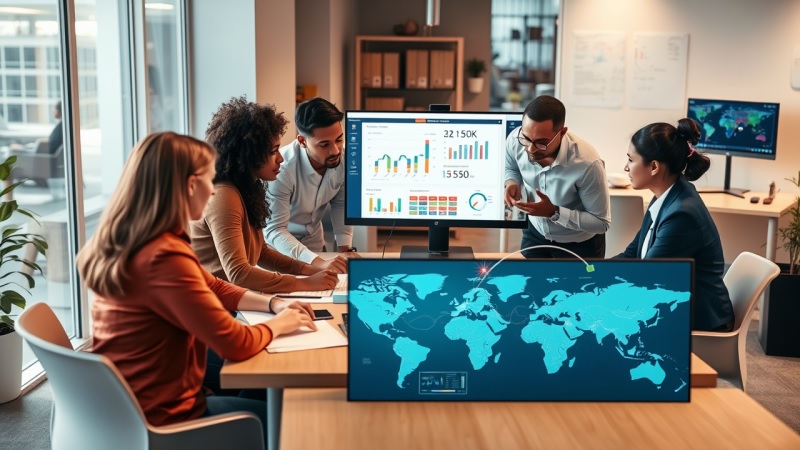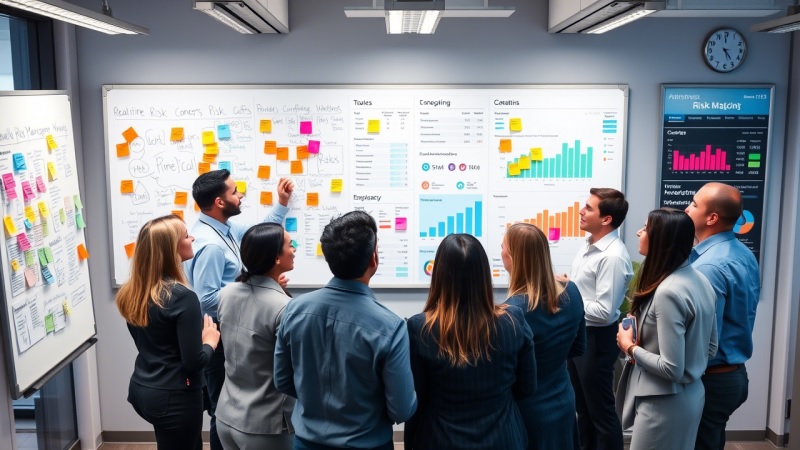
What Is Risk Management in the Digital Age?
Risk management today is about more than financial controls and compliance. It now encompasses cybersecurity, operational resilience, data privacy, AI ethics, supply chain disruption, and more. Effective strategies identify, assess, mitigate, and monitor risks across both physical and digital domains.- 1. Cybersecurity as a Strategic Priority
With data being one of the most valuable assets, cybersecurity is no longer just an IT concern—it’s a board-level priority. Enterprises must implement:- Multi-layered security architecture
- Employee cyber awareness training
- Real-time threat detection and response systems
2. Data-Driven Risk Assessment
Modern tools allow businesses to analyze vast amounts of structured and unstructured data to identify patterns, anomalies, and potential risks.
- Use predictive analytics to assess future threats
- Implement AI to automate risk identification and reporting
- Continuously monitor KPIs and KRIs (Key Risk Indicators)
3. Integrated Risk Management Platforms
Instead of isolated systems, enterprises are adopting integrated risk management (IRM) platforms that bring all risk-related processes into a centralized system.
- Connects governance, compliance, security, and auditing
- Improves visibility across departments
- Enables faster, informed decision-making
4. Managing Risks in Emerging Technologies
AI, IoT, and automation offer growth—but also introduce new risks. Leaders must:
- Evaluate the ethical implications of AI use
- Secure IoT devices from exploitation
- Monitor automation for process errors or data bias

5. Third-Party and Supply Chain Risk Management
Globalization increases exposure to third-party and supply chain disruptions. Enterprises must:
- Vet partners for cybersecurity and compliance
- Diversify suppliers to reduce geographic dependency
- Monitor vendor performance in real-time
6. Business Continuity & Crisis Management Plans
Organizations should have up-to-date, tested continuity plans that account for:
- Cyberattacks
- Natural disasters
- System failures
- Reputational crises

7. Building a Risk-Aware Culture
Risk management is not just a department—it’s an organizational mindset. To build a risk-aware culture:
- Train employees at all levels
- Encourage transparency and incident reporting
- Recognize and reward proactive risk identification
Tools and Technologies Supporting Modern Risk Strategies
- GRC Platforms (e.g., RSA Archer, MetricStream)
- Cybersecurity suites (e.g., Palo Alto, CrowdStrike)
- AI-powered analytics tools (e.g., IBM Watson Risk Insights)
- Cloud risk scoring and monitoring systems

Managing risk in the digital era is a continuous, evolving process. Enterprises must embrace forward-thinking risk management strategies that combine technology, data, and human insight to anticipate threats and build resilience.
Those who embed risk awareness into their core strategy won't just survive digital disruption—they’ll lead through it.
Read also: The Future of Leadership: Skills Every Digital Leader Must Master










